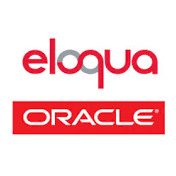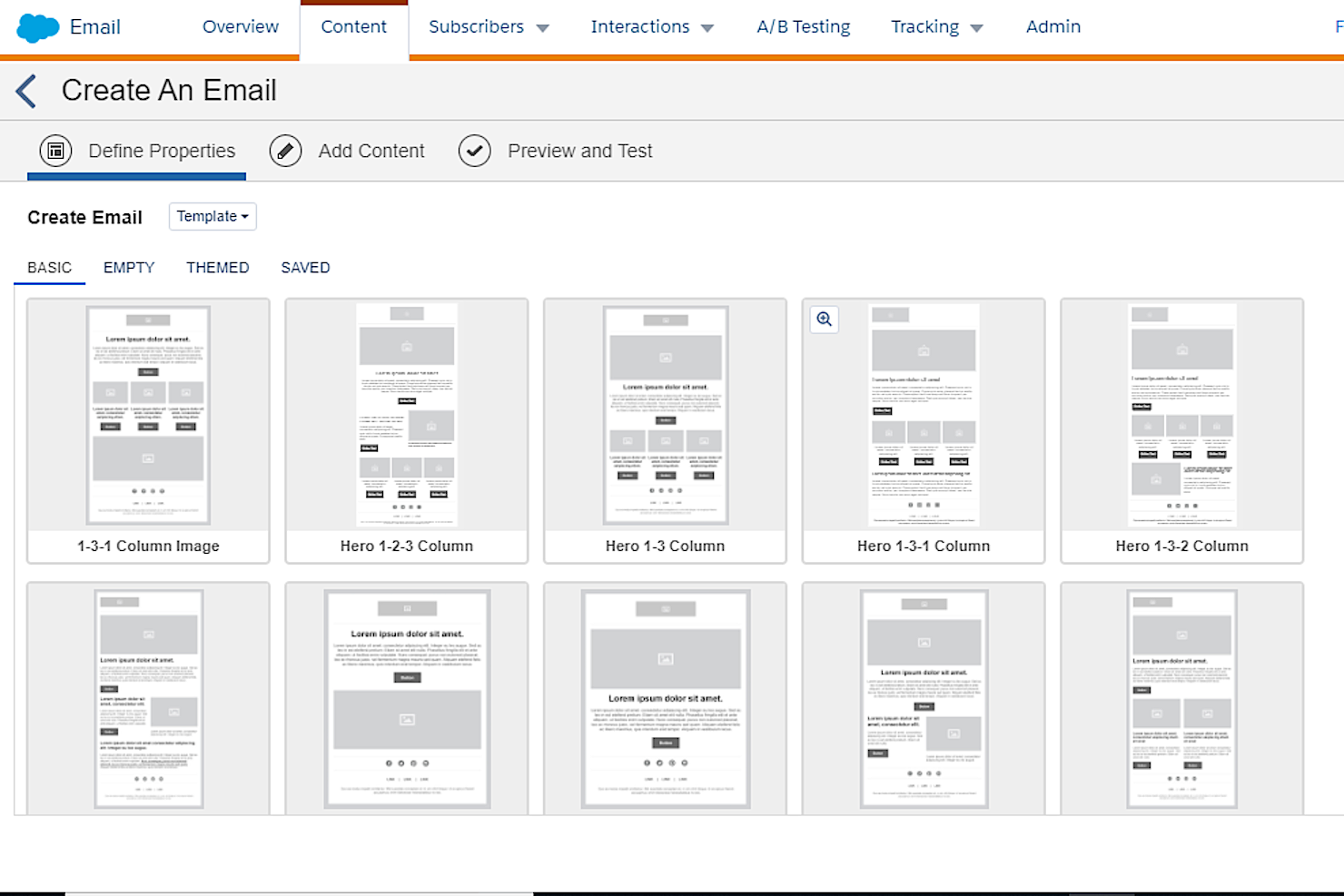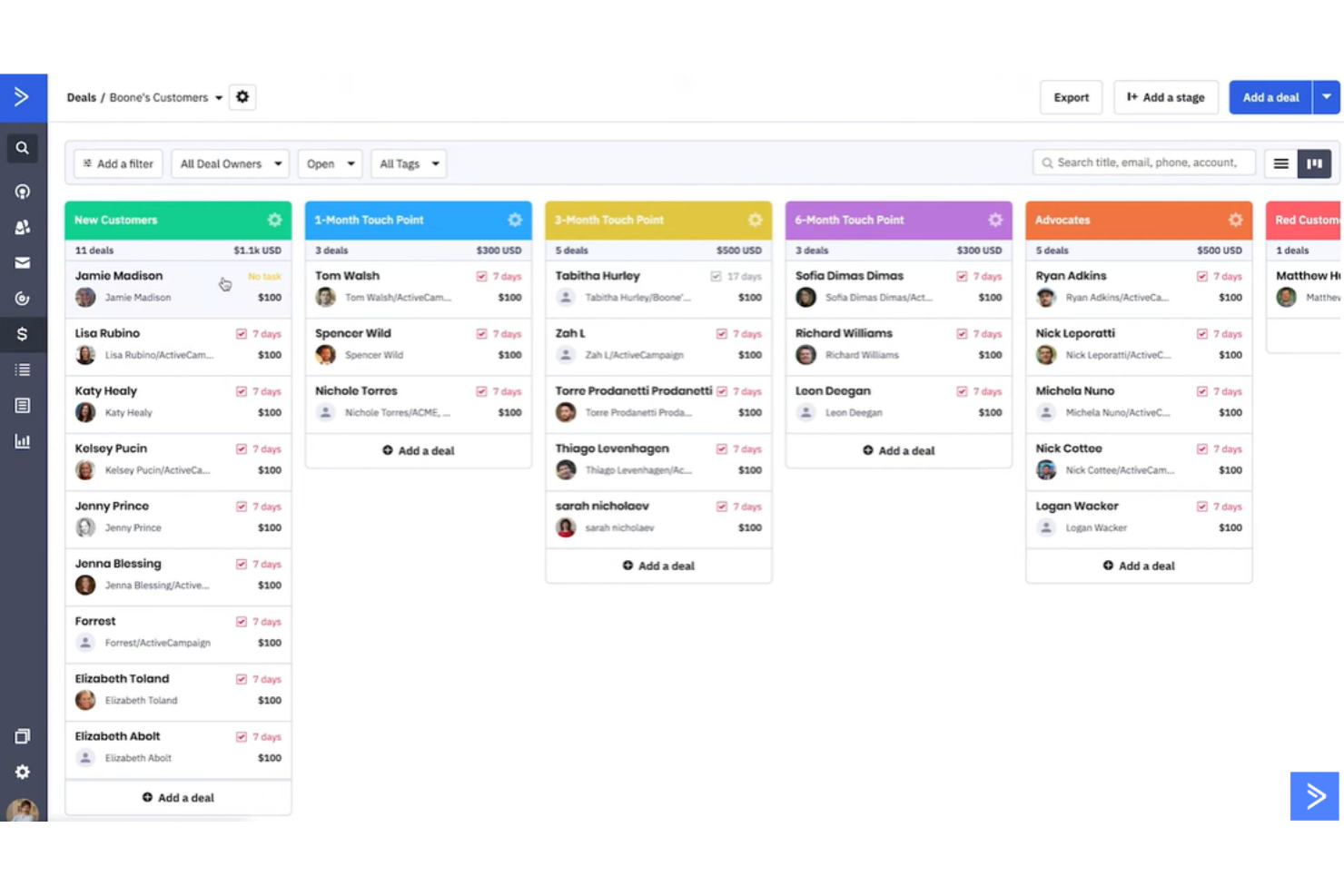Best Email Marketing Software Shortlist
Here’s a shortlist of the 10 best email marketing software along with what I found each platform does best:
Our one-on-one guidance will help you find the perfect fit.
If your email marketing software isn’t pulling its weight, it’s more than a tech issue: it’s lost revenue, broken funnels, and a bloated CRM. I’ve managed email lists across platforms and felt the frustration of tools that overpromise and underdeliver. So I tested a number of email marketing platforms, scoring each on how well they handle real tasks—from growing your list to building AI-powered workflows that actually convert. Here are the best email marketing tools that earn their spot.
Why Trust Our Email Marketing Software Reviews
We’ve been testing and reviewing marketing software since 2022. As marketing managers ourselves, we know how critical and difficult it is to make the right decision when selecting software. We invest in deep research to help our audience make better software purchasing decisions.
We’ve tested more than 2,000 tools for different marketing use cases and written over 1,000 comprehensive software reviews. Learn how we stay transparent & our software review methodology.
Best Email Marketing Software Summary
This comparison chart summarizes basic details about each of my top email marketing software selections. You can view pricing details and the availability of free trials or demos side-by-side to help you find the best software that works for your budget.
| Tool | Best For | Trial Info | Price | ||
|---|---|---|---|---|---|
| 1 | Best for audience segmentation tools | Free plan available | From $16/month | Website | |
| 2 | Best for automated features | 14-day free trial | From $25/user/month (billed annually) | Website | |
| 3 | Best for no-code editing | 14-day free trial | From $25/user/month | Website | |
| 4 | Best for agencies and franchises | Free plan available | From $5/5,000 contacts/month | Website | |
| 5 | Best for email and SMS marketing | 30-day free trial | From $59/month | Website | |
| 6 | Best for targeting the customer lifecycle | 14-day free trial | From $20/month | Website | |
| 7 | Best for multichannel marketing campaigns | Free trial + freemium plan available | From $15/month | Website | |
| 8 | Best for ecommerce businesses | 14-day free trial | From $39/month | Website | |
| 9 | Best for beginners | 30-day free trial + free plan available | From $13/month | Website | |
| 10 | Best for lead nurturing | 14-day free trial | From $249/user/month (billed annually) | Website |
-

Eloqua
Visit WebsiteThis is an aggregated rating for this tool including ratings from Crozdesk users and ratings from other sites.4.3 -

Optimizely
Visit WebsiteThis is an aggregated rating for this tool including ratings from Crozdesk users and ratings from other sites.4.2 -

Uberflip
Visit WebsiteThis is an aggregated rating for this tool including ratings from Crozdesk users and ratings from other sites.4.3
Best Email Marketing Software Reviews
If your email marketing software isn’t pulling its weight, it’s more than a tech issue: it’s lost revenue, broken funnels, and a bloated CRM. I’ve managed email lists across platforms and felt the frustration of tools that overpromise and underdeliver. So I tested a number of email marketing platforms, scoring each on how well they handle real tasks—from growing your list to building AI-powered workflows that actually convert. Here are the best email marketing tools that earn their spot.
Here are my overviews for the top 10 email marketing software on this list, including key features, integrations, pricing, and pros/cons for each.
Omnisend is an ecommerce marketing platform that focuses on email and SMS marketing to enhance customer relationships through various channels, including web push notifications. It’s designed for ecommerce businesses looking to automate their marketing efforts and manage campaigns efficiently.
Why I picked Omnisend: Omnisend offers automation features that allow you to set up and run targeted campaigns effortlessly. You can segment your audience for more precise marketing, ensuring your messages reach the right customers at the right time. The platform also supports various channels, like SMS and web push notifications, all integrated into one system. Plus, it's easy to migrate your data from other platforms, such as Klaviyo and Mailchimp.
Omnisend standout features & integrations
Standout features include robust omnichannel automation that extends beyond email to SMS and push notifications, ensuring seamless customer engagement. The platform’s pre-built automation workflows make it easy to set up abandoned cart reminders, welcome sequences, and post-purchase follow-ups with minimal effort. Additionally, advanced segmentation allows you to create hyper-targeted customer groups based on shopping behavior, purchase history, and engagement, optimizing conversions with precision.
Integrations include Shopify, WooCommerce, BigCommerce, Magento, WordPress, Wix, Square, PrestaShop, OpenCart, and Volusion.
Pros and cons
Pros:
- Comprehensive resources section
- Easy to create campaign-specific landing pages
- Deep Shopify integration
Cons:
- Has a bit of a learning curve
- Embedding multiple images into an email can be time-consuming
Salesforce CRM is a powerful ecommerce email marketing software that allows businesses to set up personalized, automated campaigns across channels easily. It provides advanced analytics that allows businesses to monitor the performance of their email campaigns over time, creating actionable insights to inform future decision-making.
Why I picked Salesforce CRM: SalesforceCRM helps users set up automated email campaigns on a predetermined schedule, ensuring customers receive the message when needed and easily trigger sends based on customer behavior or other criteria such as birthdays or anniversaries.
With its strong analytics suite, users can track key ecommerce email metrics such as open rates, click-through rates, conversions, and revenue generated from campaigns. The reporting capabilities enable users with access to detailed reports about campaigns to quickly identify where there is room for improvement and act accordingly.
Salesforce CRM standout features & integrations
Standout features include advanced tools for contact management, lead capture, and sales automation, making it easy to build and nurture customer relationships. The platform’s customer service and order tracking capabilities ensure seamless post-purchase engagement, helping businesses enhance retention and satisfaction. Its robust reporting and analytics provide deep insights into campaign performance, enabling data-driven decisions to optimize email marketing efforts.
Integrations include Mailchimp, Constant Contact, MuleSoft, Xero, Zapier, and QuickBooks.
Pros and cons
Pros:
- Flexible and comprehensive integration system
- Scalability and customizability
- Robust feature set
Cons:
- May not be appropriate for small businesses
- Steep learning curve
CRM Creatio is a no-code platform designed to help businesses with a wide range of CRM needs, including marketing, sales, and customer service.
Why I picked CRM Creatio: When it comes to email marketing, Creatio stands out by offering features that let you create, schedule, and send targeted campaigns. You can build emails using an easy drag-and-drop editor, which means your team doesn’t need to rely on a designer or coder. You’ll also have access to advanced segmentation options, allowing you to group your contacts based on behavior, demographics, or previous interactions.
The software allows teams to set up automated email workflows triggered by certain customer actions, helping you nurture leads without manual intervention. Plus, it provides detailed reporting, so you can track open rates, click-through rates, and conversions
CRM Creatio standout features & integrations
Standout features include lead management tools that enable businesses to track prospects throughout the sales funnel, ensuring efficient follow-ups and conversions. The platform’s event management capabilities allow teams to seamlessly coordinate webinars and in-person events alongside their marketing efforts. Additionally, customer journey mapping provides a visual representation of interactions across multiple channels, helping businesses optimize their engagement strategies.
Integrations include Salesforce, Microsoft Dynamics 365, SAP, Oracle, Google Workspace, Slack, Mailchimp, Zoom, Twilio, and Docusign.
Pros and cons
Pros:
- Scalable for businesses of different sizes
- Automation for email workflows and campaigns
- Good comprehensive view of customers
Cons:
- Data migration may be complex
- Customization can be time-consuming
BigMailer.io is an email marketing platform for agencies and franchises looking to manage multiple brands and campaigns from a single dashboard. It supports various email types, including promotional, transactional, and automated messages.
Why I picked BigMailer: You can add unlimited brands to your account, allowing you to handle all your clients or projects in one place. This centralized approach simplifies your workflow and ensures consistency across all your email campaigns. Another benefit is the platform's support for various email campaign types, whether you're sending bulk emails, setting up drip campaigns, or managing transactional emails. This versatility means you can consolidate all your email marketing activities on a single platform, making your processes more efficient.
BigMailer.io standout features & integrations
Standout features include customizable email templates that allow for brand consistency across multiple campaigns, making it easier to maintain a cohesive identity. The platform’s real-time engagement tracking provides instant insights into how recipients interact with emails, helping users refine their strategies. Additionally, automated handling of bounces, unsubscribes, and complaints ensures deliverability and keeps email lists clean without manual intervention.
Integrations include SparkLoop, Zapier, Integromat, Pabbly, Zoho, and SureTriggers.
Pros and cons
Pros:
- Ability to manage multiple brands from a single dashboard
- Can host on your own domain
- Unlimited email templates
Cons:
- Limited native integrations
- Not ideal for ecommerce businesses
Campaigner is a cloud-based email marketing software designed for small and midsize businesses looking to scale their email automation and marketing capabilities to the next level.
Why I picked Campaigner: Campaigner is a good option for ecommerce business owners who are looking to tailor their marketing strategies according to their target customers’ buying behavior. One of its most appealing features, especially for email marketing professionals and ecommerce owners, is the built-in email designer. The tool features a drag-and-drop mechanism that enables users to efficiently create professional-looking custom emails, complete with various content elements such as images and text. The software also has a selection of customizable email templates for users to choose from.
Campaigner standout features & integrations
Standout features include a built-in drag-and-drop email designer that simplifies the creation of professional, custom emails with dynamic content elements. A/B testing tools allow businesses to experiment with different email versions to determine what resonates best with their audience. Additionally, advanced audience targeting and marketing automation ensure that campaigns reach the right customers at the right time, maximizing engagement and conversions.
Integrations include Ninja Forms, Shopify, Magento, Adobe Analytics, Survey Town, and Google Analytics.
Pros and cons
Pros:
- Robust email marketing and automation
- A/B testing and optimization
- Advanced segmentation and testing
Cons:
- Slightly cluttered and confusing user interface
- Limited native integrations
ActiveCampaign is a customer experience automation platform and email marketing powerhouse that is about as feature-rich as they come.
Why I picked ActiveCampaign: As a customer experience platform, ActiveCampaign has invested a lot of time and effort into creating solutions that target the full customer lifecycle, as well as different types of users, like B2B, B2C and ecommerce clients.
They also offer customized solutions for key industries such as Agencies, Bloggers & Influencers, Education, Enterprise, Entertainments & Events, Fitness & Nutrition, Healthcare, Non-Profit, Small Businesses, Real Estate, Technology, or Travel & Hospitality.
ActiveCampaign standout features & integrations
Standout features include unlimited email sending with advanced templates for various use cases, from transactional messages to highly personalized campaigns. The platform’s predictive sending feature optimizes delivery times based on user behavior, increasing engagement rates. Additionally, marketing attribution tools help businesses track and measure the impact of their campaigns, ensuring data-driven decision-making.
Integrations include adTorch, Bonjoro, BurstSMS, Calendly, ERJA, Facebook, FuseDesk, Google Analytics, JustCall, Magento, NativeForms, Pipedrive, Shopify, Slack, Spiffy, and Xoxoday Plum.
Pros and cons
Pros:
- Out-of-the-box automation templates
- Simple to create branded email templates
- Easy to set up powerful automations
Cons:
- Customizing an email’s design can sometimes be difficult
- Has a bit of a learning curve for beginners
SendGrid is a Twilio product, meaning you get access to email marketing, as well as WhatsApp, SMS, and video solutions. They are currently used by large companies like Airbnb, Glassdoor, Instacart, Spotify, Uber, and Yelp.
Why I picked SendGrid: As a multichannel service, SendGrid is great for those who view email marketing as just one of many conversational platforms through which they want to communicate with their customers. Because of this, it can be more complex than others on this list but it’s worth it if you want touch points across every device and app type.
SendGrid standout features & integrations
Standout features include advanced email design tools that support both drag-and-drop editing and pure HTML customization, giving users full creative control. The platform also offers powerful automation options, including recurring emails and time-based drip series, helping businesses maintain consistent engagement. Additionally, dedicated IPs and custom domains enhance deliverability, ensuring emails land in inboxes rather than spam folders.
Integrations include Airtable, Bluecore, eData Source, FullContact, Google Cloud, Microsoft Azure, Softlayer, Twilio, WordPress, Yieldr, and Zapier.
Pros and cons
Pros:
- Detailed email tracking and analytics
- Robust APIs and SDKs, making it a favorite among devs
- Exceptional email deliverability rates
Cons:
- Some advanced automations not possible
- Complexity for beginners
Drip is an email marketing software built specifically for e-commerce businesses. It was designed to help online retailers link their email drip campaigns directly to the customer buying cycle.
Why I picked Drip: Drip’s email platform offers advanced email segmentation, so you can be confident you’re tailoring your communications according to your customer’s preferences and recent actions. The software's customer segmentation data will tell you whether a consumer is first learning about your product, dangerously close to making that purchase, or is a loyal repeat customer. Also, thanks to their many pre-built templates and automations, you can spend less time crafting emails and more time developing your email marketing strategy.
Drip standout features & integrations
Standout features include advanced customer segmentation tools that allow businesses to tailor communications based on shopping behavior, purchase history, and engagement levels. The platform’s email builder offers both a point-and-click visual editor and custom HTML options, providing flexibility for different design needs. Additionally, Drip includes a playbook of automated best-practice emails, such as welcome emails, abandoned cart reminders, and post-purchase follow-ups, streamlining customer engagement.
Integrations include BigCommerce, Facebook Custom Audiences, Gravity Forms, Insightly, Magento, PayPal, Pipedrive, Shopify, Sleeknote, ViralSweep, WooCommerce, and Zapier.
Pros and cons
Pros:
- Excellent list segmentation options
- Campaign duplication feature helps you save time
- Great reporting features
Cons:
- UI takes some getting used to
- Has a learning curve, especially for beginners
Mailchimp is a well-known email marketing and automation tool with features that define the email marketing software space. In addition to being a trusted email marketing tool, they also offer website, commerce tools and other assorted marketing features, including connections to payment processing systems.
Why I picked Mailchimp: Mailchimp is a great email marketing software for beginners, offering a detailed marketing library, help center, and 24/7 email and chat support. On top of that, they also offer more advanced educational information like their Expert Insights and Industry Trends news feeds, plus their training program — Mailchimp 101 — which walks users through their long list of features from start to finish.
Mailchimp standout features & integrations
Standout features include a robust marketing automation suite that enables businesses to create personalized customer journeys with behavior-based triggers. The platform’s built-in CRM and audience segmentation tools help users target the right customers with precision, optimizing engagement and conversions. Additionally, Mailchimp’s creative assistant streamlines email design by generating brand-aligned visuals, making it easier for users to craft professional-looking campaigns.
Integrations include Chargebee, Firebase, Formstack, Patreon, Recurly, Shopify, Stripe, Squarespace Commerce, Typeform, and QuickBooks.
Pros and cons
Pros:
- Easy audience list segmentation
- Robust analytics and reporting features
- Easy to use
Cons:
- Lean customer support
- Multivariate testing locked to Premium plan
Keap is a business automation and CRM platform tailored for small businesses. It combines sales and marketing automation, invoicing, and payment processing features, making it an advanced tool for managing customer relationships and business processes.
Why I picked Keap: Keap offers tools for creating and sending personalized emails, tracking customer interactions, and automating marketing workflows. The software's features include customizable email templates, detailed analytics, and a visual campaign builder that allows users to set triggers and automate responses based on customer behavior.
Keap also supports lead management, allowing businesses to score and segment leads effectively. This feature helps users nurture prospects through the entire pipeline and tailor messaging at each stage, eventually leading to a sale.
Keap standout features & integrations
Standout features include a visual campaign builder that simplifies marketing automation by allowing users to set up triggers and automated responses based on customer behavior. The platform’s CRM capabilities integrate seamlessly with appointment scheduling, invoicing, and payment processing, making it a comprehensive tool for managing customer interactions. Additionally, Keap’s lead capture and pipeline management tools help businesses track, score, and nurture prospects effectively, ensuring personalized engagement at every stage.
Integrations include PlusThis, AdEspresso, BigCommerce, AppointmentCare, Bonjoro, Gmail, Jotform, Outlook, ScheduleOnce, WordPress, Wistia, and Zapier. Keap also has an open API for custom integrations.
Pros and cons
Pros:
- Robust CRM features
- Many customization options
- Good marketing and sales automation
Cons:
- May not be suitable for larger businesses with more complex needs
- May be pricey for businesses with limited resources
Other Email Marketing Software
Here are some additional email marketing software options that didn’t make it onto my shortlist, but are still worth checking out:
- Constant Contact
For automatic subject line testing
- Klaviyo
For advanced integrations
- theMarketer
For personalized campaigns
- HubSpot Marketing
For in-depth reporting
- GetResponse
For conversion funnels
Related Marketing Software
If you still haven't found what you're looking for here, check out these tools closely related to email marketing software that we've tested and evaluated.
- Marketing Software
- Marketing Management Software
- Account Based Marketing Software
- Social Media Management Software
- Email Marketing Software
Email Marketing Software Selection Criteria
When selecting the best email marketing software to include in this list, I considered common buyer needs and pain points like ease of use and deliverability rates. I also used the following framework to keep my evaluation structured and fair:
Core Functionality (25% of total weighting score)
To be considered for inclusion in this list, each solution had to fulfill these common use cases:
- Store email addresses
- Send bulk emails
- Segment email lists
- Automate email sequences
- Track email performance
Additional Standout Features (25% of total weighting score)
To help further narrow down the competition, I also looked for unique features, such as:
- Send time optimization
- Personalized emails using dynamic content
- Advanced email journey builder
- Live content updates
- White glove support from marketing experts
Usability (10% of total weighting score)
To get a sense of the usability of each system, I considered the following:
- Intuitive user interface
- Drag-and-drop email builder
- Mobile-friendly design
- Comprehensive template library
- Ease of navigation and task execution
Onboarding (10% of total weighting score)
To evaluate the onboarding experience for each platform, I considered the following:
- Availability of training videos
- Access to interactive product tours
- Pre-designed templates for quick setup
- Support through chatbots and live webinars
- Step-by-step onboarding guides
Customer Support (10% of total weighting score)
To assess each software provider’s customer support services, I considered the following:
- Availability of 24/7 support
- Multiple support channels including chat, email, and phone
- Comprehensive knowledge base
- Quick response times
- Access to community forums
Value For Money (10% of total weighting score)
To evaluate the value for money of each platform, I considered the following:
- Competitive pricing plans
- Availability of free trials or freemium versions
- Features included in entry-level plans
- Flexibility in subscription models
- Overall cost-benefit ratio
Customer Reviews (10% of total weighting score)
To get a sense of overall customer satisfaction, I considered the following when reading customer reviews:
- Overall satisfaction ratings
- Commonly cited pros and cons
- Likelihood of recommending the software
- Feedback on customer support quality
- Reports on system reliability and performance
How to Choose Email Marketing Software
It’s easy to get bogged down in long feature lists and complex pricing structures. To help you stay focused as you work through your unique software selection process, here’s a checklist of factors to keep in mind:
| Factor | What to Consider |
| Scalability | Will this software grow with your business? |
| Integrations | Does it integrate with the tools your team already uses? |
| Customizability | Can you tailor the software to fit your specific needs? |
| Ease of Use | Is the software user-friendly for your team? |
| Budget | Does the cost fit within your budget constraints? |
| Security Safeguards | Does it offer robust security features to protect your data? |
| Support | Is customer support reliable and easily accessible? |
| Analytics | Does it provide detailed analytics to measure performance? |
Trends in Email Marketing Software
In my research, I sourced countless product updates, press releases, and release logs from different email marketing software vendors. Here are some of the emerging trends I’m keeping an eye on:
- AI-Driven Content Creation: AI is not just about automation anymore. It's being used to create personalized email content that can engage users on a deeper level. Tools like Moosend are incorporating AI to generate subject lines and email body content that resonate more with recipients.
- Hyper-Personalization: Moving beyond generic personalization, hyper-personalization uses data to tailor emails to individual user behaviors and preferences. For instance, AI analyzes user interactions and purchases to craft highly relevant email offers. This trend is seen in platforms like Mailchimp.
- Microsegmentation: Instead of broad audience categories, micro segmentation divides users into very small groups based on specific behaviors or demographics. This allows for more targeted and effective campaigns.
- Interactive Emails: Adding elements like carousels, polls, and embedded videos directly into emails to boost engagement. Tools like Campaign Monitor are enabling these features to make emails more dynamic and engaging.
- Privacy-Focused Features: With increasing concerns about data privacy, email marketing tools are providing more control and transparency over user data. This includes features to help comply with regulations like GDPR and CCPA.
What Is Email Marketing Software?
Email marketing software is a tool that helps businesses send marketing emails to their customers. Marketers, business owners, and content creators generally use these tools to engage with their audience and promote products or services.
Software with features including automation, segmentation, and analytics capabilities help users save time, target the right audience, and measure email marketing campaign effectiveness. Overall, these tools make it easier to manage and optimize email marketing efforts.
Features of Email Marketing Software
When selecting email marketing software, keep an eye out for the following key features:
- Effective Email Delivery: Ensures that emails are successfully delivered to recipients' inboxes, avoiding spam filters and bounces.
- Subscribers List Management: Facilitates the organization and segmentation of email subscribers for targeted campaigns.
- Personalization: Allows for customizing unlimited emails with recipients' names and other personal details to increase engagement.
- Drag & Drop Editor: Provides an intuitive interface for designing email templates without needing coding skills.
- Automating Emails: Enables setting up automated email sequences based on triggers like user actions or dates.
- Reports & Analytics: Offers insights into email performance through metrics such as open rates, click-through rates, and conversions.
- Integration with Other Apps: Allows the email marketing software to connect with other tools like CRM systems, social media, and ecommerce platforms.
- Email Templates: Pre-designed templates that can be customized for different campaigns, saving time and ensuring consistency.
- A/B Testing: Facilitates testing different versions of emails to determine which performs better.
- Mobile Optimization: Ensures that emails are responsive and look good on all devices, including smartphones and tablets.
Benefits of Email Marketing Software
Implementing email marketing software provides several benefits for your team and your business. Here are a few you can look forward to:
- Personalization: Tailors emails to individual customer journeys, helping to create a more engaging and relevant experience.
- Automation: Sends timely messages through automated campaigns, ensuring consistent communication without extra effort.
- Analytics: Offers insights into campaign performance, helping you track success and make informed decisions.
- Audience Management: Enables effective targeting and segmentation of your contact lists, so you can reach the right people.
- Integration: Connects with other applications and platforms, allowing for a cohesive marketing strategy.
- Content Creation: Provides tools for crafting engaging and effective email content, making it easier to design professional emails.
- Cost-Effectiveness: More affordable than traditional marketing methods, making it a great option for businesses of all sizes.
Costs and Pricing of Email Marketing Software
Selecting email marketing software requires an understanding of the various pricing models and plans available. Costs vary based on features, team size, add-ons, and more. The table below summarizes common plans, their average prices, and typical features included in email marketing software solutions:
Plan Comparison Table for Email Marketing Software
| Plan Type | Average Price | Common Features |
| Free Plan | $0 | Basic email templates, limited subscriber count, basic analytics, and limited customer support. |
| Personal Plan | $5-$25/user/month | Advanced templates, higher subscriber limit, automation features, and enhanced analytics. |
| Business Plan | $30-$75/user/month | Custom branding, priority support, advanced segmentation, and integration with other tools. |
| Enterprise Plan | $100+/user/month | Dedicated account manager, advanced customization, unlimited subscribers, and comprehensive reporting. |
New & Noteworthy Product Updates
Below, you’ll find our release notes and take on the latest and greatest email marketing software product updates. Discover what’s now possible through feature releases, improvements, and updates on web, desktop and mobile apps. Learn what’s new, if it’s hot—or not, and why it matters for digital marketers.
April 2024: Email Marketing Software Updates
Here are some April update highlights.
SendGrid Update Notes
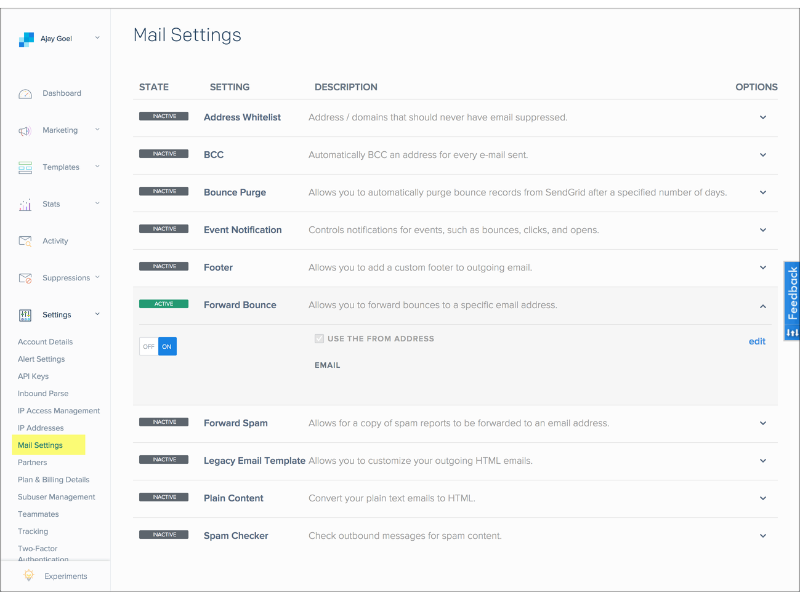
SendGrid has recently detailed new sending requirements imposed by Gmail and Yahoo aimed at enhancing email security and delivery effectiveness. These major email providers have introduced stricter guidelines that enforce the adoption of established best practices, such as SPF (Sender Policy Framework) and DKIM (DomainKeys Identified Mail) email authentication.
SPF helps to validate that incoming mail from a domain comes from a host authorized by that domain's administrators. Meanwhile, DKIM provides a way to validate a domain name identity associated with a message through cryptographic authentication. Starting in April 2024, emails that fail to comply with these requirements will face temporary errors and an escalating likelihood of being rejected.
The value of this update to SendGrid users is significant. By complying with these new requirements, SendGrid users will likely see improvements in email deliverability and a reduction in the risk of their emails being marked as spam. This enhances the overall trustworthiness of their communications and protects the integrity of their email marketing campaigns.
Verdict: Hot! This update is necessary and more security is always a good thing. Hopefully marketers start to notice an increase in email deliverability very soon.
March 2024: Email Marketing Software Updates
Here are some March update highlights.
ActiveCampaign Update Notes
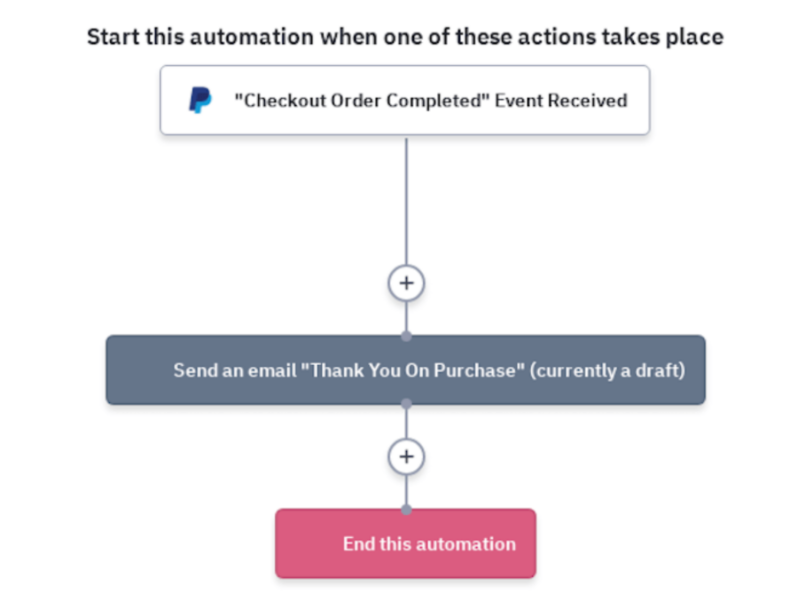
In March 2024, ActiveCampaign introduced a new feature that integrates recurring payments with WooCommerce and PayPal. This enhancement broadens the ecommerce capabilities of the platform, providing a streamlined solution for setting up and managing regular transactions.
This new functionality allows users to easily configure recurring payment options within their WooCommerce store, using PayPal as the payment processor. The integration facilitates automatic billing cycles and ensures seamless transaction processing, making it easier for businesses to offer subscriptions or other regular payment models to their customers.
The addition of recurring payments significantly enhances the value ActiveCampaign offers to ecommerce businesses. By enabling automatic and regular billing, companies can improve cash flow consistency and customer retention. This feature not only simplifies the payment process but also helps businesses stabilize revenue streams and build stronger, ongoing relationships with their customers.
Verdict: Not! This update is pretty niche, so the majority of active users probably won't be affected by it or even notice the change.
Mailchimp Update Notes
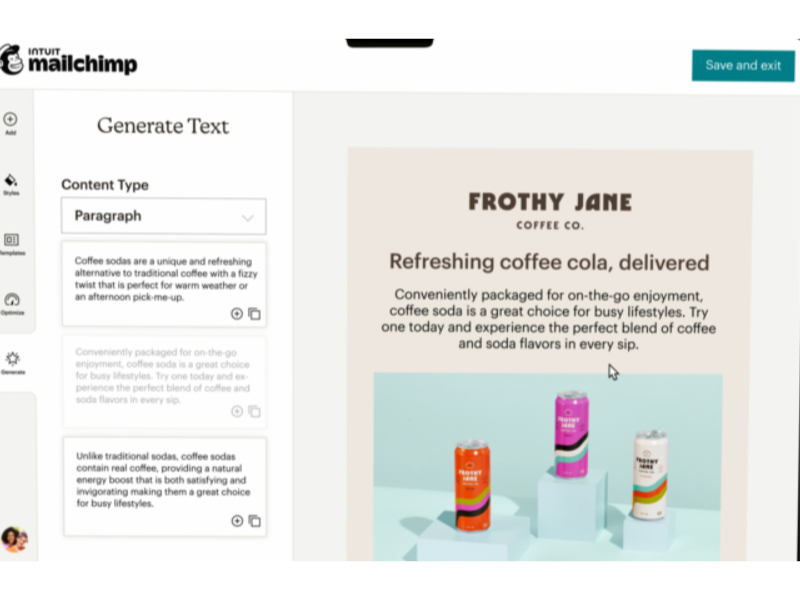
Mailchimp has introduced a new AI Growth Assistant, a forward-thinking tool designed to enhance marketing campaigns through artificial intelligence. This feature is part of Mailchimp's ongoing efforts to incorporate advanced technologies into their platform, making sophisticated marketing tools more accessible to their users.
The AI Growth Assistant works by analyzing user data and previous campaign performance to offer tailored suggestions aimed at increasing engagement and efficiency. By leveraging AI, the tool can identify patterns and opportunities that may not be evident through traditional analysis, suggesting actionable improvements in real-time.
This update is highly valuable to users as it simplifies the process of campaign optimization. By automating the analysis and recommendation phases, Mailchimp users can focus more on creative and strategic aspects of marketing, rather than getting bogged down by data analysis.
Verdict: Hot! Newsletters are a key component of modern marketing but they take a lot of time. Having an AI outline to get you started is a great time-saver.
February 2024: Email Marketing Software Updates
Here are some February update highlights.
Salesforce Perdot Update Notes
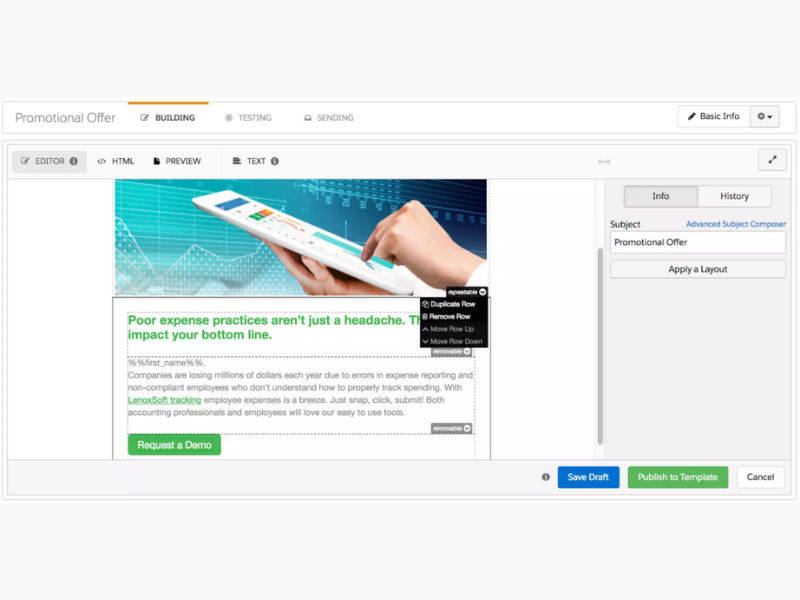
In February 2024, Salesforce Pardot will launch a new email builder. This tool offers a modular design, allowing users to switch between the current and a new, advanced editor. This flexibility enhances the email creation process.
The update brings a robust email builder that supports customizable modules, making it easier to align emails with campaign objectives. Users can choose between the straightforward existing editor or the enhanced capabilities of the new builder, enabling precise customization.
The upgrade provides significant benefits by allowing marketers to create more engaging, tailored emails. With editing options for all skill levels, it boosts the effectiveness of campaigns, enhances customer engagement, and drives better returns.
Verdict: Hot! I'm a big fan of making critical components of software easier to use. No brainer!
HubSpot Marketing Update Notes
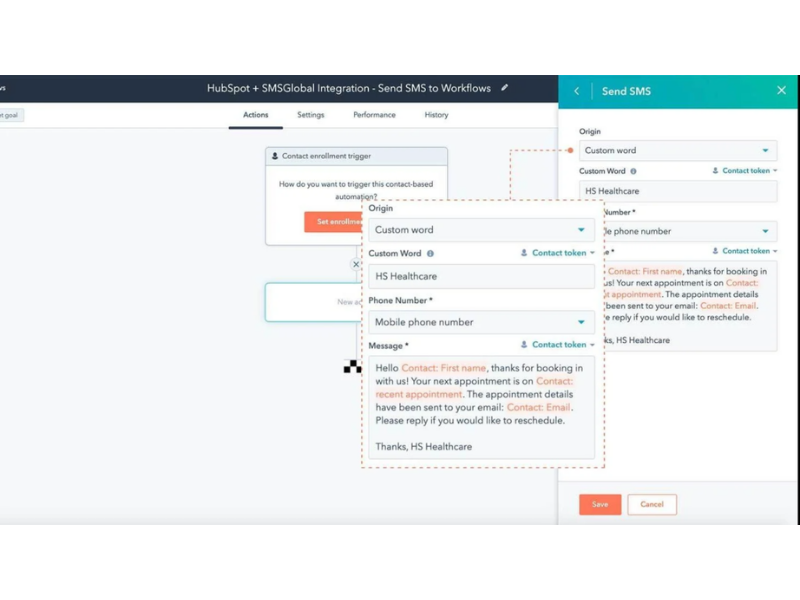
In February 2024, HubSpot Marketing enhanced its platform by integrating SMS capabilities through a partnership with Twilio. This update allows users to send timely and relevant SMS messages directly to customers without the need for a separate Twilio account.
The integration simplifies the process of setting up and deploying SMS campaigns by leveraging Twilio's robust messaging technology within the HubSpot environment. Users can now initiate SMS communications quickly, ensuring messages are both timely and aligned with customer interactions and needs.
The value of this update is significant for users seeking direct and immediate customer engagement. By incorporating SMS services, HubSpot enables more dynamic and responsive marketing strategies. This addition helps businesses increase customer touchpoints, improve communication efficiency, and enhance overall engagement metrics without complicating their existing workflows.
Verdict: Not! HubSpot is just borrowing Twilio tech and charging extra for it. You can probably find a better deal shopping around.
Campaigner Update Notes
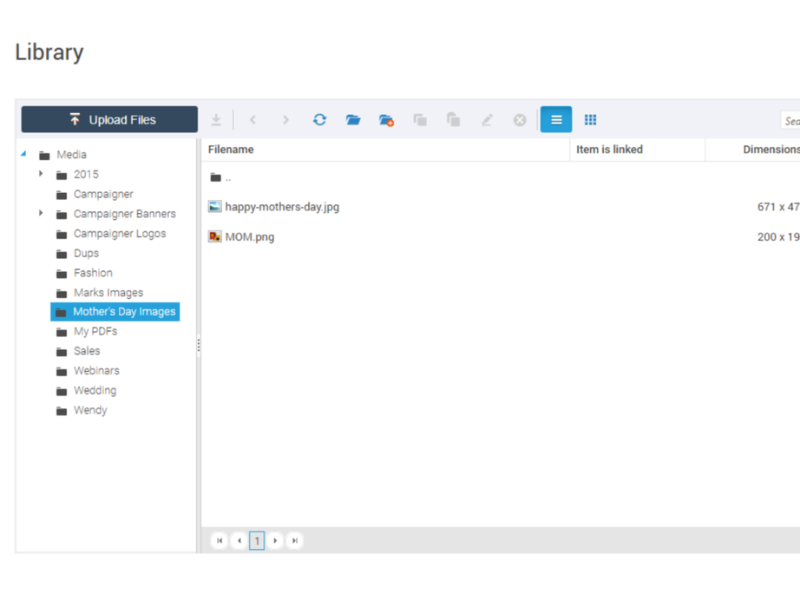
In the first quarter of 2024, Campaigner introduced significant enhancements to its platform, including a full email editor and a comprehensive media library. These new features streamline the creation and management of marketing materials directly within Campaigner, eliminating the need for third-party software.
The updated email editor supports HTML customization, allowing users to have full control over the design and layout of their email campaigns. Simultaneously, the new media library provides a centralized space where users can store, organize, and edit images and PDF files. This integration ensures that all marketing assets are easily accessible and editable in one place.
The enhancements bring substantial value to users by simplifying the marketing process. With advanced editing tools and a unified media library, users can enhance the visual appeal and effectiveness of their campaigns. These tools not only save time and resources but also empower marketers to execute more personalized and impactful email campaigns.
Verdict: Hot! A unified media library makes maintaining brand consistency across all channels much easier, including email blasts.
Omnisend Update Notes
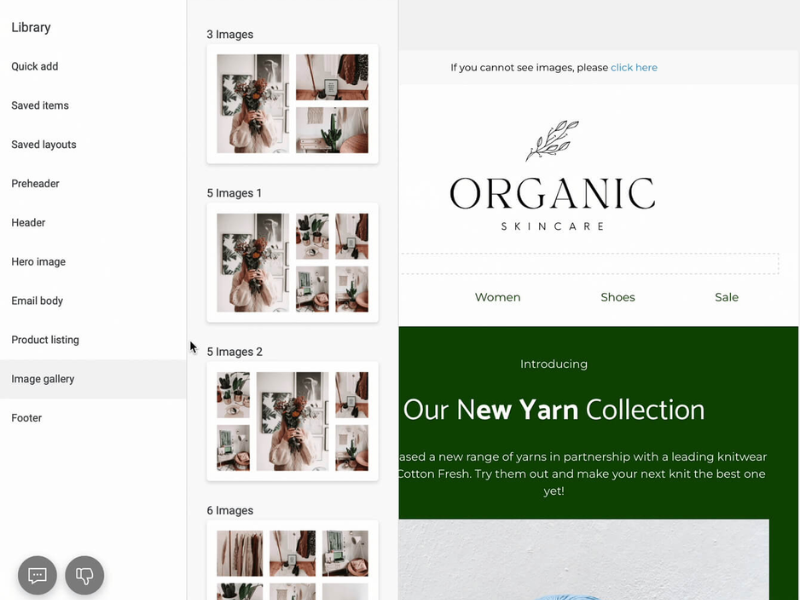
In February 2024, Omnisend rolled out a series of enhancements to its Email Builder, designed to improve both the flexibility and effectiveness of email marketing campaigns. These updates include a versatile new image layout option that allows marketers to position images on the left, middle, or right of the email content, broadened integration capabilities for social media icons, and an innovative search function for quickly accessing saved items and layouts.
The updates to the Email Builder are geared towards providing users with more control over the design and personalization of their emails. The new image layout option is particularly notable, as it enables marketers to create more visually appealing and strategically organized emails. The expanded ability to integrate multiple social media icons directly into the emails enhances the interaction between brands and their audience, fostering better engagement across platforms.
These enhancements to Omnisend’s Email Builder are valuable for users as they simplify the email creation process while also allowing for more customized and engaging content. By improving functionality and user experience, Omnisend helps its customers maximize their email marketing effectiveness, leading to better engagement rates and ultimately, increased conversions and customer retention.
Verdict: Hot! These quality-of-life improvements make Omnisend much easier to work with andf email templates much easier to customize.
Drip Update Notes
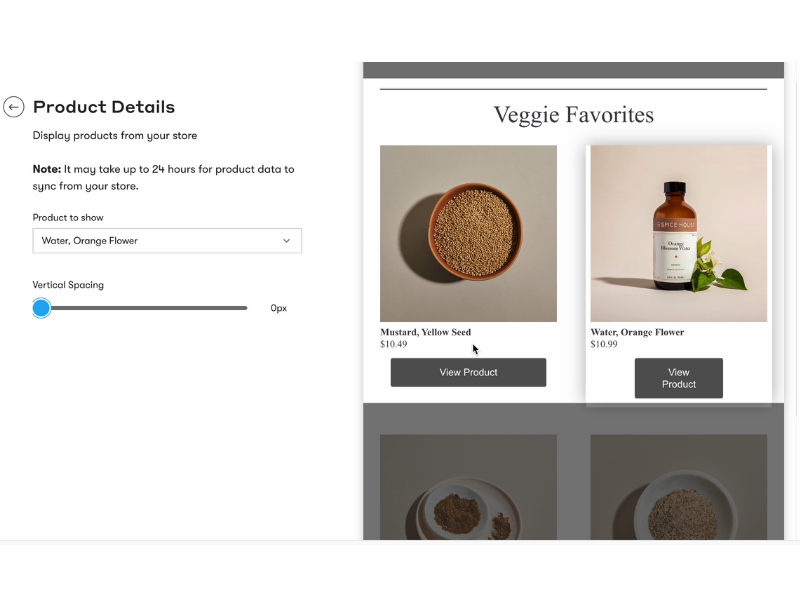
On February 2024, Drip released significant enhancements to its Workflow Builder, aimed at streamlining the marketing automation process for its users. These updates are designed to make the construction and modification of workflows more intuitive and less time-consuming.
The improved Workflow Builder now allows users to easily reposition steps within their marketing workflows through a simple drag-and-drop interface. It also introduces the ability to duplicate any node within the workflow, saving time and effort that would otherwise be spent recreating complex steps. Users can also pause live workflows without causing disruptions, allowing for real-time adjustments.
These enhancements bring substantial value to Drip users by significantly reducing the complexity and time required to manage and optimize marketing workflows. The ability to pause and edit live workflows offers flexibility and control, ensuring that marketing strategies can be fine-tuned in response to dynamic market conditions.
Verdict: Hot! This update should excite users because it significantly enhances the flexibility and efficiency of creating and managing marketing workflows.
Constant Contact Update Notes
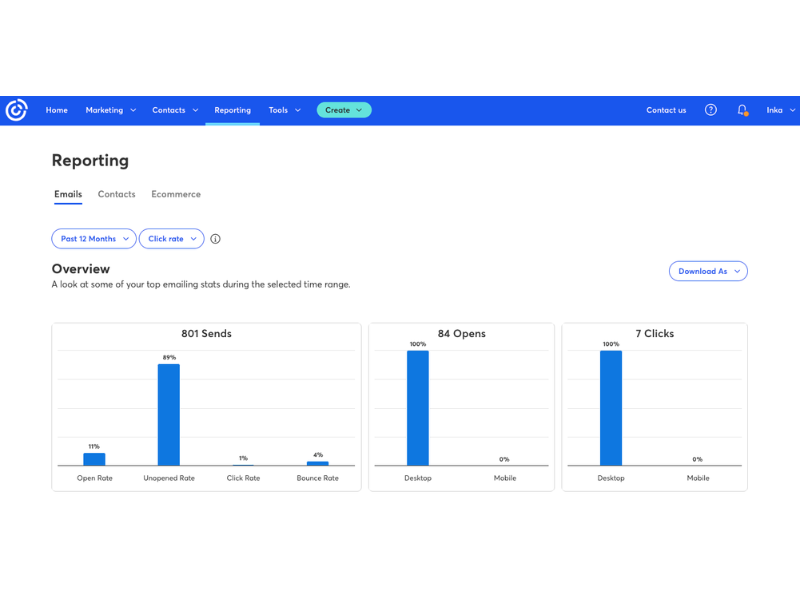
In February 2024, Constant Contact introduced a significant update to its email services, responding proactively to new authentication requirements mandated by Google and Yahoo. This update was necessitated by changes in security protocols aimed at enhancing the integrity and reliability of email communications.
Beginning February 1, 2024, these modifications are designed to significantly improve how emails are authenticated, ensuring they comply with the latest security standards. The integration of these protocols helps to filter out spam and phishing emails more effectively, ensuring that only authenticated emails reach user inboxes.
This update brings considerable benefits to Constant Contact users, primarily enhancing email deliverability and security. By complying with the stricter email authentication standards set by major email service providers like Google and Yahoo, Constant Contact users can expect a reduction in emails being marked as spam, thus improving the overall effectiveness of their email marketing campaigns.
Verdict: Hot! This update is essential, and enhancing security is undoubtedly beneficial for you and your email subscribers.
Email Marketing Software FAQs
Here are some answers to common questions about email marketing software:
Can I do email marketing for free?
Is email marketing still worth it?
How much does email marketing cost per month?
How do email marketing tools comply with GDPR and other privacy laws?
How to measure and analyze the success of email marketing campaigns?
What is the simplest email marketing?
Is email marketing still profitable?
Additional Email Marketing Software Reviews
I hope this list helped you get a better understanding of how email marketing software can support your email marketing campaigns. If you’re looking for other marketing tools, I suggest you check out:
- Email Marketing Automation Software
- Email Marketing Analytics Tools
- Personalized Email Marketing Software
- Video Email Marketing Software
- White Label Email Marketing Software
- Email Marketing Software for Small Businesses
What's Next?
Keep up with marketing tools, insights, and interviews with industry experts by subscribing to The CMO newsletter.











